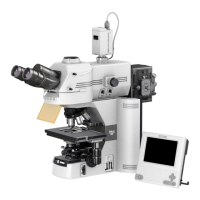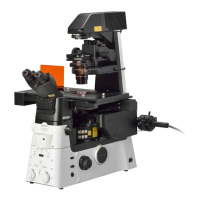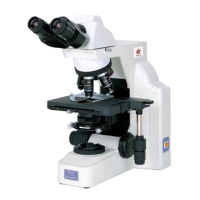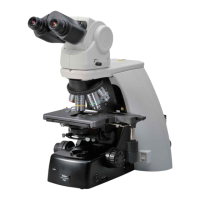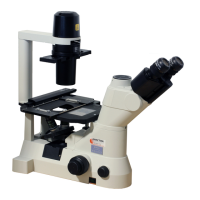Chapter 3 Individual Operations
3.10 Selecting a Condenser
40
3.9.2
For Conoscopic Microscopy
For the conoscopic microscopy, the condenser aperture diaphragm functions as a field diaphragm
on the conoscopic image surface. Stop down the diaphragm until it circumscribes the
circumference of the view field of the conoscopic image (pupil of the objective).
3.10
Selecting a Condenser
To perform the polarization microscopy, the P swing-out condenser must be used.
Objective
magnification
P swing-out condenser
(
✓
: suitable, -: not suitable)
1x
-
2x
4x
✓
Note 1
10x to 100x
✓
Note 1: Swing out the top lens before use.
Depending on the type of objective, the indicated numerical aperture of the objective may not be
achieved.
For example, when an objective with an N.A. of 1.4 is used, the maximum aperture of the P
swing-out condenser will be only about 65% of the objective's N.A., even when the condenser
aperture diaphragm is fully open.
How to use the P swing-out condenser
The top lens of the P swing-out condenser can be
moved outside the optical path with the swing-out
knob.
During normal bright-field microscopy or
orthoscopic microscopy using a low-power objective
of 4× or lower, swing out the top lens.
During microscopies using an objective of 10X or
higher or conoscopic microscopy, the top lens is
placed into the optical path.
During measurement of retardation or evaluation
by interference color, swing out the top lens (the
condenser aperture diaphragm may be stopped
down) and illuminate with light that is as parallel to
the optical axis as possible.
op lens
Swing-out knob

